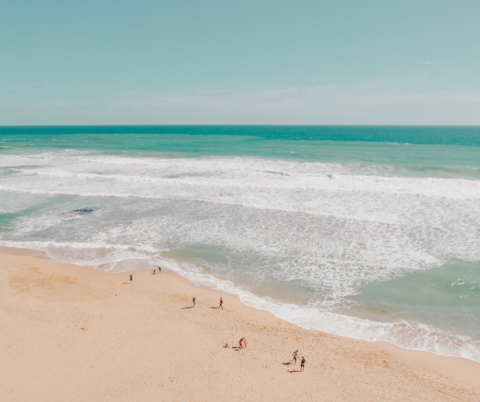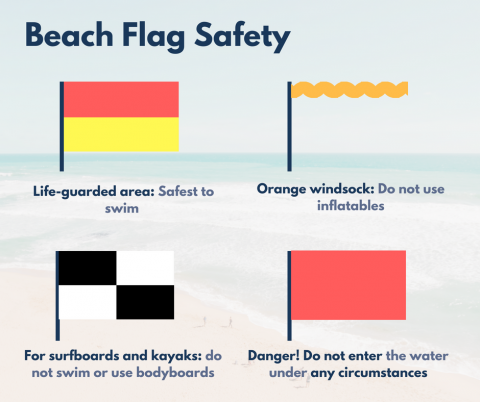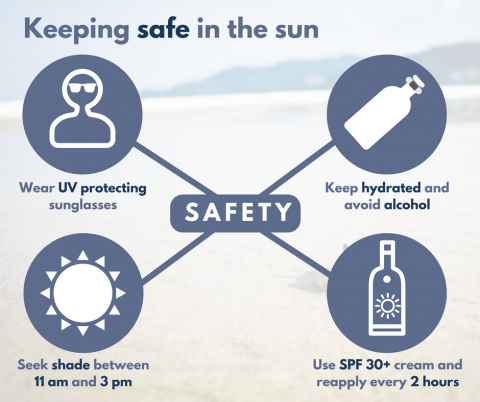WA Management provides professional, adaptable and appropriate solutions for your Health and Safety needs. Each week, our research blog takes a detailed look at particularly topical areas of the sector, or risks that are repeatedly overlooked. This week, to tie in with the ongoing scorching temperatures, and our upcoming ‘Hazard of the Month’, we take a look at how you can keep yourself and your loved ones safe at the beach. Furthermore, we cursorily glance at how the risks raised could be mitigated by WA Management in a broader sense.
Overview
 It is one of the most glorious of English pastimes, piling into the clownishly undersized car laden donkey-like with unnecessary items to travel to the coast. Each beach full to the absolute rafters with holiday-goers; sunbathing, paddling and sandcastle-making. I would assert that there is not a single person in this wonderful nation who cannot recall at least one day at the seaside. As someone who spent many a summer ensconced on the sprawling sandy beaches of the Isle of Purbeck, I know how nostalgically and wistfully I dream of the sea.
It is one of the most glorious of English pastimes, piling into the clownishly undersized car laden donkey-like with unnecessary items to travel to the coast. Each beach full to the absolute rafters with holiday-goers; sunbathing, paddling and sandcastle-making. I would assert that there is not a single person in this wonderful nation who cannot recall at least one day at the seaside. As someone who spent many a summer ensconced on the sprawling sandy beaches of the Isle of Purbeck, I know how nostalgically and wistfully I dream of the sea.
And although the vast majority of the UK’s 12,000km of coastline are maintained to an exacting standard, and are generally very safe – it is always good to brush up on how you can look after your family at the beach. This research blog thus takes a brief, but informative, look into how you can maintain Health and Safety in two key areas: the sea and sun.
Safety in the Sea
The seas around Britain can be very dangerous indeed. Statistics from the RNLI in 2017 stated that an average of 22 people had to be rescued from inland and offshore waters each day. Furthermore, despite the heroic and truly selfless work of the RNLI’s 4,966 volunteer crewmen, 190 people drowned in British waters last year, of which 47% never had the intention of going into the water.
That last statistic in particular highlights how unpredictable the water can be, and how it should always be treated with respect. Below, we have outlined some of the key hazards of coastal waters, and ways they can be mitigated.
- Swimming: an undoubtedly enjoyable activity when done safely. Never go beyond your physical limit or confidence. If you can, always visit a life-guarded beach, and adhere to the beach flags there (see our handy graphic below). Life-guards are there to ensure you have a fun, but safety-conscious, time at the beach.
- Currents: even tranquil surface waters can have dangerous and powerful rip-curl currents lurking beneath. Always err on the side of caution and brush up on distress calls. If you are surfing or bodyboarding and find yourself drifting away from shore, DO NOT DISCARD your board – it will provide crucial buoyancy to preserve energy.
- Tides: every summer, thousands of people are caught unawares by tides that rise quickly. Some areas of Britain’s coast have globally unparalleled tidal ranges, which trap cars, kids and ice-creams vans alike. It is always sensible to check up on tidal times before, and always keep a wary eye on the water.
- Other risks: The water can also mask a multitude of other risks; from shallow jagged rocks, to sand bars that plummet shelf-like into deep water. Finally, watercraft speed across the water, occasionally without regard for safety. As advice, always use your common sense, and stay within your limits. Visit the RNLI’s excellent fact-sheet summary HERE for precise information.

Safety in the Sun
At the other end of the spectrum, the sun can pose a multitude of health hazards to those who caught unawares. Heatstroke, dehydration, UV light and of course sunburn can all ruin your day at the beach. Here are a few tips on how to prevent the above.
- Heatsroke: a form of hyperthermia that occurs when core body temperatures exceed 40ᵒC. To avoid, make sure you seek cool shaded areas between 11am and 3pm. Also, whilst it is important to stay hydrated, make sure your drinks aren’t too cold, as it can send your body into minor thermal shock.
- UV Light: An often neglected risk that can damage your eyes and increase risk of sunstroke. Ensure that you have UV protecting sunglasses and a wide-brimmed hat to keep the harmful rays away.
- Sunburn: The bane of any beach-goer. Sunburn can be both a nuisance and health hazard, as prolonged exposure can increase the risk of Skin Cancer (Melanoma). To reduce the risks, wear SPF 30+ waterproof sunscreen, reapplying it every two hours.

Conclusions, and relevance to WA Management
The aim of this blog is not to discourage intrepid holiday-goers from venturing to the sea – quite the opposite. The coast can provide a fantastic opportunity and atmosphere to teach people, young and old, about risks and how to respond to them. Provided we know about the hazards and how to properly deal with them, we can ensure that beach continues to be as enjoyable as ever. Visit the RNLI HERE to read up about the fantastic work they do keeping our beaches safe and to brush up on your safety skills.
Many of the points raised in the blog are highly transferable to WA Management. Lone working, working outside, manual handling and many other aspect of a visit to the beach appear in our professional lives. WA Management provides comprehensive online training and risk assessments for all of these and more. Why not visit out website HERE to find out more?
